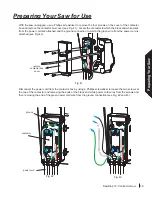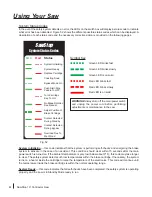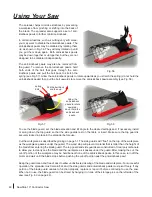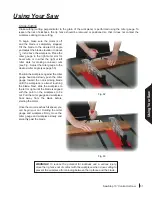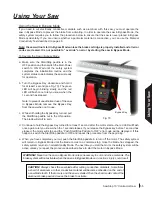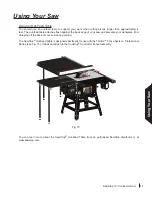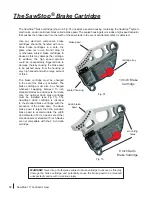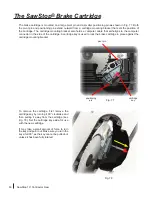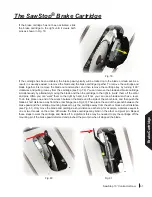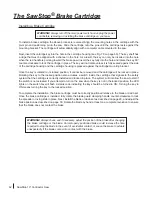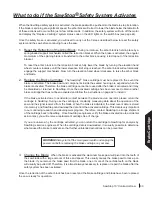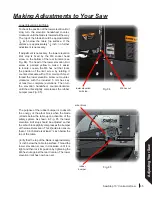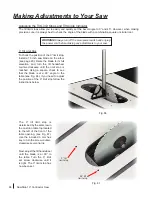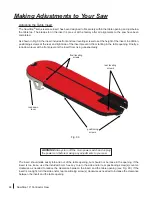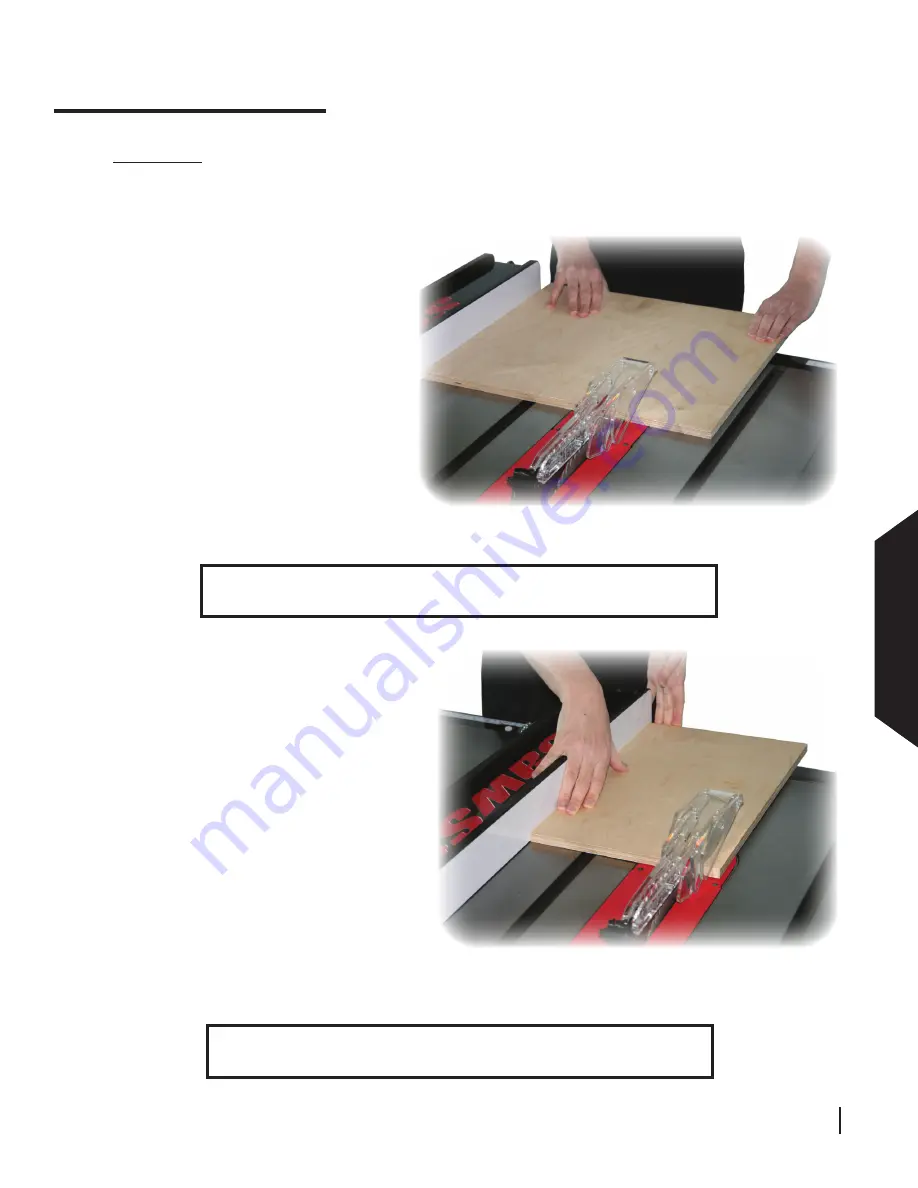
SawStop 10” Contractor Saw 53
Using Y
our
Saw
Using Your Saw
Rip Cutting
Rip cutting or cutting with the grain of the workpiece must be performed with a rip fence to support and guide
the workpiece. The miter gauge should not be used when making rip cuts. The blade guard should be used for
all through cuts.
To begin, make sure the motor is off and
the blade is completely stopped. Tilt the
blade to the desired tilt angle and adjust
the blade elevation to about
1
⁄
8
inch above
the workpiece. Position the rip fence for
the desired rip width and lock the fence
in place. Refer to the owner’s manual that
accompanied your rip fence for instructions
on using your fence.
WARNING!
A rip fence must always be used when making rip cuts. Never
perform a ripping operation freehand or a serious injury may result.
Position the workpiece flat on the table and
flush against the side of the rip fence. Turn
on the motor. Use both hands to push the
workpiece smoothly toward the blade, as
shown in Fig. 66. It is important to always
maintain at least 6 inches between your
hands and the blade. If your hand that is
closest to the blade comes within 6 inches
of the blade, remove that hand from the
workpiece and continue the cut using the
hand that is closest to the fence or with both
hands near the fence (see Fig. 67). If your
hand closest to the fence also comes within
6 inches of the blade, remove that hand and
use a push stick to finish the cut. A push stick
is a tool that is used to push the work piece
forward to make a cut while allowing the user
to keep their hands at a safe distance from
the blade. (See page 82 for instructions on
making a push stick.)
WARNING!
To reduce the chance of a serious injury, always use a push
stick or push block when your hand comes within 6 inches of the blade.
Fig. 66
Fig. 67

